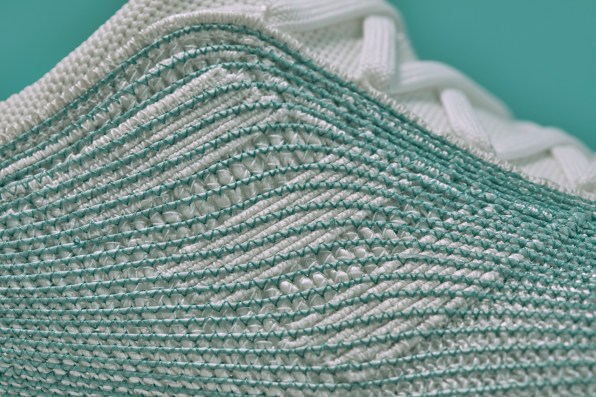Original Adidas Shoes Are Made in What Country
During a 110-day chase of an illegal fishing boat–starting in Antarctica and ending off the coast of Ghana–the nonprofit Sea Shepherd recovered 72 kilometers of plastic gill nets from the poachers, helping save other wildlife from getting tangled in the discarded nets.
Now the nets, along with other ocean plastic waste, have been turned into a state-of-the-art running shoe–as part of a larger campaign to prove that the trash filling oceans can be made into products that consumers actually want to buy.
Adidas partnered with Parley for the Oceans, a nonprofit that fights ocean plastic waste, to develop the shoe. Part of the upper is made from plastic bottles, bags, and other plastic that commonly ends up in the water. Because plastic degrades quickly in the ocean–turning into tiny particles that are hard to collect–most of the plastic was gathered on beaches.

The team set up a global supply chain of trash collection zones, beginning with the Maldives. "They actually have an island of plastic trash," says Eric Liedtke, Adidas Group executive board member of global brands. "This is an island state that's in jeopardy not just from rising oceans, but also from their own trash." The plastic was bundled, sent to a recycler, and turned into yarns and polymers that could be used in manufacturing.
The gill nets are blended in with the other ocean waste–not an easy task, since the nets started off smelling like fish and weren't designed for recycling. "It's made to basically be indestructible," Liedtke says. "You've got these things that are made to last forever and are very tough. When we've got to use that in a new construction, you can't just stick that yarn into existing equipment."
The company worked with suppliers to develop a process for cleaning the nets, and then borrowed a technique used in the furniture industry–called tailored fiber placement–to knit the fibers together. In the final shoe, the ocean plastic is white, and the green threads are made from gill nets. (The soles are made with conventional materials.)
While the process took months to develop into a usable shoe, the company sees it as proof that the hardest problems are solvable. "We want to show people that if you apply your intelligence and your creativity to it, you can find a solution to just about anything," he says.
Adidas now plans to scale up the use of ocean plastic in other products, beginning with a large footwear line this fall, and following that with apparel, such as football jerseys, in 2017. "The shoe is the first thing, and it's the hardest thing," says Liedtke. "Apparel gets a little easier."
The company is also doing what it can internally to prevent plastic from reaching the oceans in the first place–phasing out plastic bags in stores, eliminating microbeads in personal care products, and getting rid of plastic water bottles at meetings in its headquarters. It's hoping that the new line of ocean plastic products will remind consumers they can also cut back on plastic.
"Whether it's the fork you use at lunch, the plastic bowl that comes with your takeaway salad, or the plastic bottle you drink your Gatorade or water in–we collect those things, but we also want people to know they can cut plastic out of their lives, too," he says.
The first shoes are being produced in a limited edition of 50 pairs, and will be given away through an Instagram contest that asks people to talk about how they will avoid single-use plastic.
Have something to say about this article? You can email us and let us know. If it's interesting and thoughtful, we may publish your response.
Original Adidas Shoes Are Made in What Country
Source: https://www.fastcompany.com/3060741/adidas-new-ocean-plastic-shoes-are-just-the-beginning
0 Response to "Original Adidas Shoes Are Made in What Country"
Post a Comment